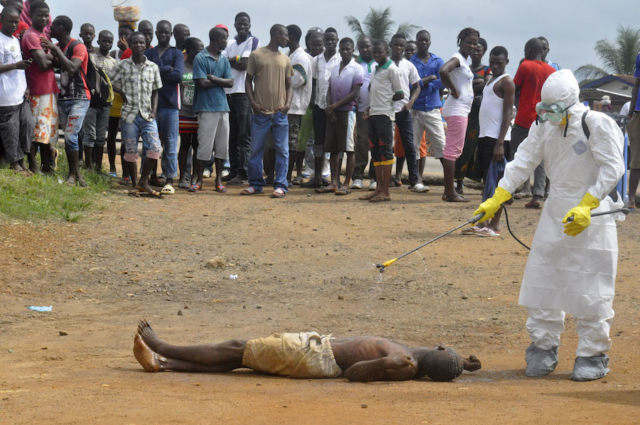The latest information from the World Health Organization shows at least 1,848 people have died in the current Ebola outbreak in West Africa, a figure that now exceeds the total number of recorded deaths previously caused by Ebola since it’s discovery in 1976.
Accounting for all outbreaks up until the current epidemic, WHO data shows there have been just over 1,590 deaths from 2,387 cases of Ebola. The largest previous outbreak was in Uganda in 2000, where 425 people were infected and 224 died. WHO counts 25 previous outbreaks, including the twin outbreaks in 1976 when scientists first became aware of the virus.
Officials say this outbreak has become out of control.
“Six months into the worst Ebola epidemic in history, the world is losing the battle to contain it,” said Dr. Joanne Liu, the international president of Médecins sans Frontières (Doctors Without Borders).
“It is impossible to keep up with the sheer number of infected people pouring into facilities. In Sierra Leone, infectious bodies are rotting in the streets,” she said. “Rather than building new Ebola care centers in Liberia, we are forced to build crematoria.”
Liu said Ebola treatment centers had been reduced to places where people went to die alone.
This chart gives an idea of the scale health and government officials are facing in context to previous outbreaks. Click on the key to turn cases or deaths on and off.
Pharmaceutical companies have been increasing their efforts for a vaccine, and human trials will begin this week in the U.S. Kentucky BioProcessing said a new supply of ZMapp is several weeks away.
When it is available again, there will be “about a dozen doses or less,” said David Howard, a spokesman for Kentucky BioProcessing parent company Reynolds American Services. We’ll have more on ZMapp on Thursday night’s show.
USAID agency is providing $75 million to fund 1,000 more beds in Ebola treatment centers in Liberia and tens of thousands of protective suits for health care workers.
The region’s struggling health systems have buckled under the pressure of caring for thousands of people sickened by the killer virus. There is not enough space on wards for those seeking care and not enough staff to care for them. There is also a severe shortage of protective gear for doctors and nurses.
Report includes information compiled from the Associated Press
 CGTN America
CGTN America
 A health worker sprays a man suspected of dying due to the Ebola with disinfectant chemicals as people look on in Monrovia, Liberia, Sept. 4, 2014. Photo: AP/Abbas Dulleh
A health worker sprays a man suspected of dying due to the Ebola with disinfectant chemicals as people look on in Monrovia, Liberia, Sept. 4, 2014. Photo: AP/Abbas Dulleh

